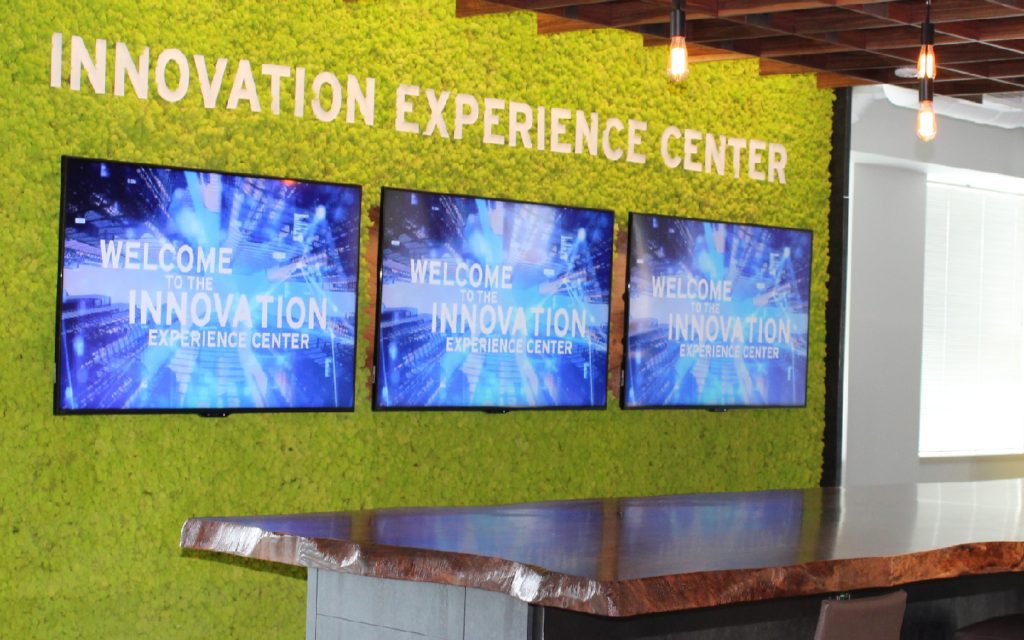Flat-panel displays have become a fixture in corporate workspaces for good reason: They are a more practical and energy-efficient way for users to share screens and their subsequent ideas, in a common space.
However, we all know that a workspace cannot be strictly utilitarian, especially when considering that there are factors affecting the work being completed that are intangible. In fact, a case could be made that the aesthetics of an AV installation in a workspace and its ease of use, are both forms of productivity enhancement.
Architects, Interior Designers, and space planners have long understood this intangible form of the effect of a space on a user’s work. As the variety of display technologies has proliferated, their integration into the overall design of the workspace has opened paths to exciting new design ideas… and unfortunately, more than a few design disasters. To avoid the disasters, it is prudent and wise to involve your AV Integration partner as early as possible in the design process.
An example of an (too often) overlooked design consideration is infrastructure planning. Placing a flat panel display on a wall may seem straightforward enough. However, the larger AV design for the space must be accounted for. Display sightlines, accommodation for AV cabling, power and data pathways, and allowance for future technology updates and scope expansion are a few of the many considerations that should be discussed as a design team prior to any devices being located in a space design.
Sometimes, the need for such cabling infrastructure can inspire unique installations that flaunt the technology, rather than hiding it. This is clearly a design choice that will influence the way the entire space functions, how it feels, and in some cases what technologies are chosen for the technology design.
If centralized AV resources are going to be delivered to various meeting spaces, the AV specialist needs to understand the end-users’ needs and design requirements for each space. They can then work hand in hand with Architects, Interior Designers, furniture manufacturers, and even finish specialists to determine the best possible overall design strategy for the client and space. The two work together.
A prime example is the growing use of AV for informational (and inspirational) signage. Use of AV technology in these applications can bring life and energy to otherwise functional spaces and foster corporate culture. While there are many specific AV displays designed for these applications, their implementation into the design may require coordination with the architectural styling of the space, additional cooling, and potential structural additions…not to mention the housing, control, and extension of media sources that will supply and refresh the content. If all of these items are discussed during the planning phase of a project, not only will the end result be an energetic and functional space, but it can also save the headache and financial frustration of having to redesign an existing space once implemented.
This scenario combines all the challenges of sophisticated AV integration: proper specification of the appropriate AV display technology, addressing cabling layout and infrastructure needs, and specifying and locating the media sources and their management. Partnership at the initial design phase is the best way to assure the implementation will succeed in both function and aesthetic design.
Perhaps the single most important aspect of such a partnership is the simple understanding that neither form nor functionality alone defines the success or failure of a space. Most good AV organizations have good engineers. Great AV organizations have consulting, engineering, and integration professionals, prepared and willing to work alongside their counterparts in the larger project team to achieve overall project success for the client.
The best such organizations can understand a project or space’s vision and supply solutions and even enhancement options to make the overall project an even better expression of the end goal. By working back from the final experience and alongside the larger project team, your AV partner can help make sure your AV technology is as sophisticated in design and function, as every other fixture in the space.



